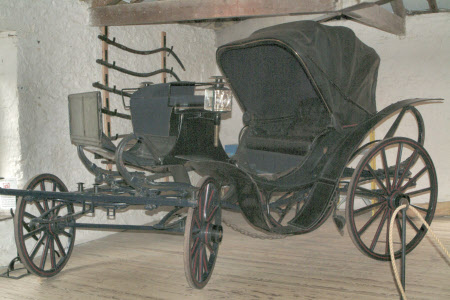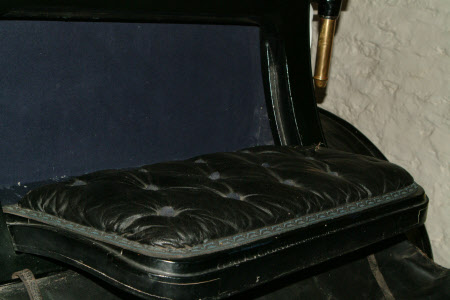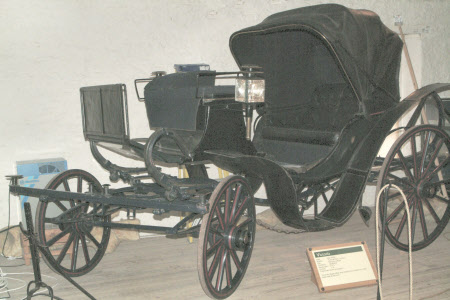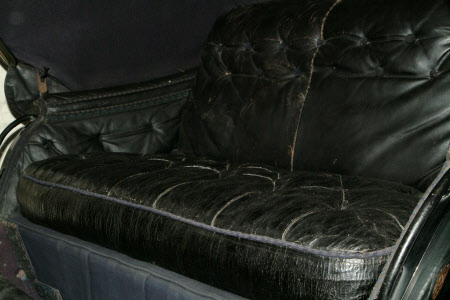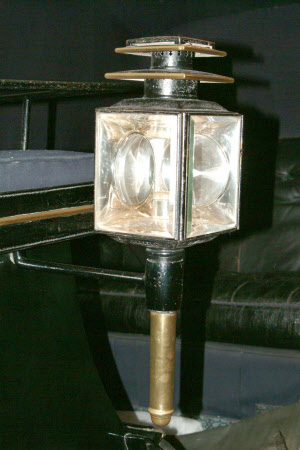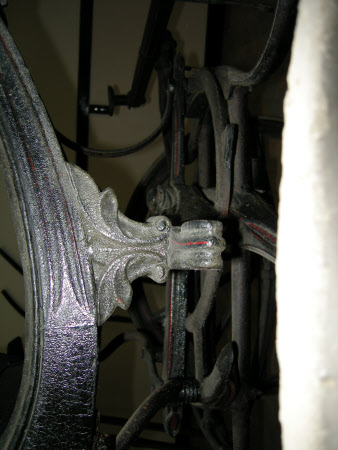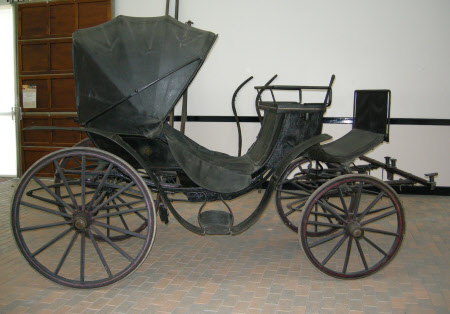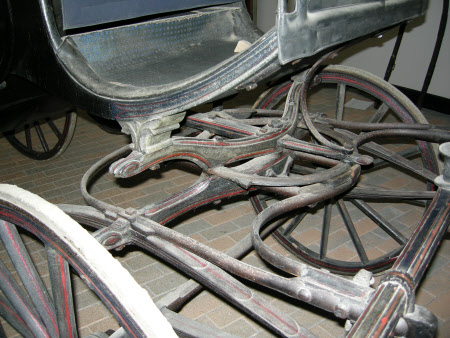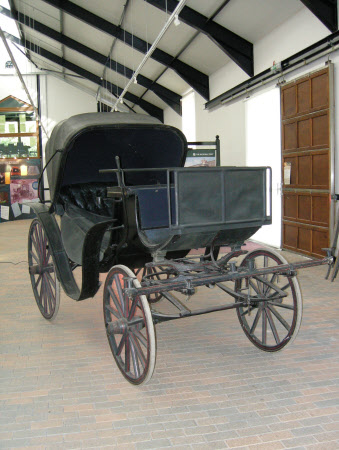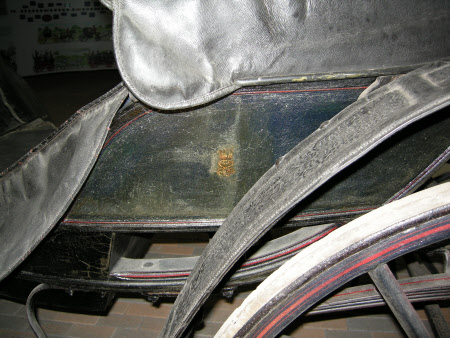Victoria
Turrill and Sons
Category
Carriages & other vehicles
Date
1850 - 1890
Materials
Glass, Leather, Textile, Wood
Measurements
2240 x 1680 mm; 3350 mm (Length)7 cwt (Wt)
Place of origin
London
Order this imageCollection
National Trust Carriage Museum
NT 272872
Summary
Victoria (panel boot) built by Turrill and Sons, London for the Marquess of Bute between 1850 and1890.
Full description
This carriage was built by Turrill & Sons of Long Acre, London, in the late 1800s and was a gift from the Marquis of Bute. With shallow nautilus shell body and hinged occasional seat in the back panel of the boot. The coachman’s seat has single seat rails. With single seat in forward boot, storm apron, headed box seat and drag shoe. On C and under springs. In dark green and black livery with red lining, blue leather and textile interior, with two cushions and two candle lamps. Coat of arms on both side panels and rear. Victorias were popular in the late 19th century, particularly with ladies, the low body providing easy access for them in the full dresses then worn. Although essentially open carriages, they have a folding leather head over the principal seat. This example is a panel boot Victoria (the boot being the structure beneath the coachman’s seat) and it has a small extra hinged seat which stows in the back panel of the boot. There are spikes on the hind axle bed to discourage small boys from jumping on for a free lift. Victorias were coachman-driven, with a groom beside him, and could be pulled by a single horse or a pair. It is difficult to fit a brake satisfactorily to a carriage with a body hung on leather braces from C springs, so a drag shoe is fitted, which is placed under the nearside hind wheel to brake it when going down hill, and hung under the carriage when not in use. BODY Panel boot Victoria with shallow nautilus shell body and hinged occasional seat in back panel of boot. Sunk foot board between moulded brackets. Hinged footboard. Coachman’s seat with single seat rails. Steps Jagged plate step in centre. Ribbed rim at outer stock wheels. Rectangular jagged plate treads ion outer roller bolts. Jagged plate steps mounted at the end of the Querries (?) Lamps Square removable lamps with two tier square chimneys. Lamp irons bolted to boot sides. External Furniture Brass. CARRIAGE Wheels 12 and 14 spoke English pattern wheels with staggered spokes, bent half rims and flat iron tyres. Axles Collinge’s patent axles – straight. Springs C springs and under springs. Dumb irons with no moulded cuppings. Fore carriage Open futchell fore carriage with compassed beds with elliptical patterned carved fiddle ends. Half wheel plate and sway bar. Perch Wrought iron perch reflecting line of under side of body. Hind carriage Hind axle bed and hind spring bed. Spiked bar on top of spring bed. Brake No break. Drag shoe with chain attached to plate clipped to perch. Shoe suspended on hook at front near side back dumb iron. Paint Boot, underside of body and body frame – black. Body panels, brackets and underside of footboard – blue/green.Wheels, carriage dark blue with broad red line on wheels only. Pinbead at bottom edge of hand painted. Heraldry Shield surrounded by a Marquis’s coronet. Leather Leather head on single straight joints with welted leather valance. Leather main braces and collar braces. Leather dashboard with leather served mounting handles. Roller bolt leathers. Welted leather valance to coachman’s seat. Leather apron lined with green cotton cloth. Leather served mounting handles on front pillars. Leather wings External Furniture Brass External Trimming Front floor and footboard lined with stencilled floor cloth. Long driving box, driving wedge and seat fall blue faced wool cloth. Internal Trimming Head cloth, pleated seat fall, lining to seat recess in back of boot, dark blue faced wool cloth. Seat back, ¼ squabs and occasional seat squab, black shallow tufted morocco. Carpet with in and blue flower heads on dark blue/violet ground. Broad lace edging to seat fall black geometric worsted figure on faded pale blue silk ground. Associated cushion with black buttoned leather cloth.
Provenance
Owned by the Marquess of Bute family. In 1947 the 5th Marquess of Bute donated ten carriages to the National Museum Wales (then Welsh Folk Museum), without any conditions attached to the donation. In 1948, when the Welsh Folk Museum opened two of the carriages were put on display in their coach house, but they could not display the other carriages, which were put into storage. In January 1964 the 6th Marquis of Bute suggested that the carriages in store could be given to the National Trust to help establish the carriage collection at Arlington Court. As the carriages were in the ownership of the NMW they arranged for the unconditional transfer of 8 carriages to Arlington Court.
Makers and roles
Turrill and Sons, coach builder
